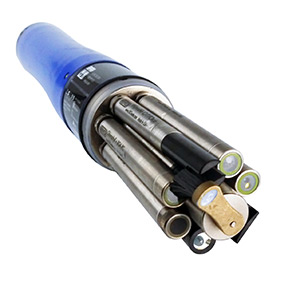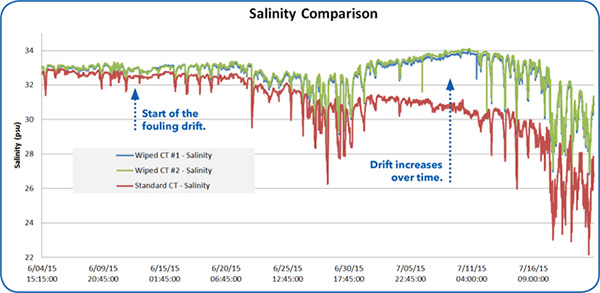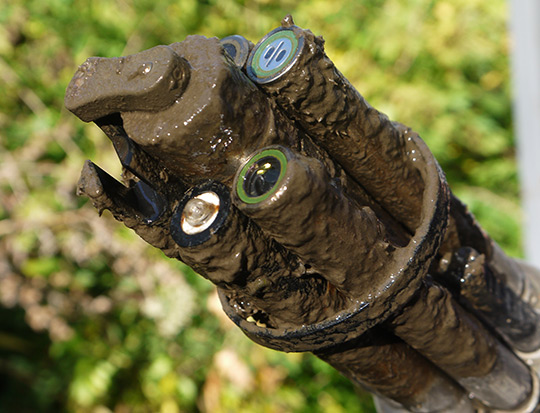Wiped Sensors Extend Water Quality Sonde Deployments
For over twenty years, YSI sondes have measured continuous water quality data at field sites around the globe. Along the way, we learned quite a few lessons in developing instrumentation.
Initially, the challenge of using in-situ sensors for long-term autonomous data collection was developing technology that could withstand what Mother Nature could throw at it, technology that could withstand; floods, mudslides, and debris and still continue to record high-quality data. It wasn’t long before instruments became much more rugged, with fundamental shifts in the build materials forming a new foundation for our sensing platforms.
Once sensors could survive the harshest of field conditions, the limiting factor for their maintenance and upkeep became battery life. As most field sites lack an external power source and rely on solar panels and batteries alone, it became more and more critical to improving the way our technology operated to reduce power consumption.

An EXO2 water quality Sonde with a Wiped (C/T) Smart Sensor installed.
Our engineers found creative ways to limit the time sensors would be active, allowing them to hibernate until they were ready to take a measurement. They also redesigned the instruments’ internal circuitry to better speed up sensor response times, allowing the equipment to make measurements in less time when they turned on.
These changes helped propel changes in organizations’ operating practices to send folks out for maintenance less frequently, stretching sonde deployment times well past where they were before.
The problem then became sensor fouling.
Now that equipment was measuring water quality in-situ for longer than ever, it was clear that biological growth, sediment, and accumulation of other debris on the sensors over time was wreaking havoc with the data. Huge swings in sensor readings resulted from the slow-buildup of debris on the sensing surfaces. The new focus became (and continues to be) how to actively protect our sensors from the effects of fouling – commonly referred to as “drift”:

Salinity data from a long-term case study.
Note the drift caused by fouling in the Standard (C/T) sensor.
Across the business landscape, companies developed a variety of product enhancements to prevent biofouling from affecting their sensors. Some solutions were more effective than others.
YSI and other sonde manufacturers introduced sensors with automated wipers to clean the sensor surfaces and other passive anti-fouling accessories to prevent biological fouling from latching onto sensor surfaces to begin with. However, for years one sensor eluded all our anti-fouling methods – the conductivity sensor.
While mechanical grooming of most sensors worked exceptionally well in fending off fouling, conductivity sensors saw limited improvement. Why? The reason is pretty straightforward – the measurement is taken inside the probe, far away from the protection of a wiper.
Wiped Conductivity & Temperature Sensor Helps Eliminate Biofouling
This is the first of many expansions to come for EXO Sondes, and more importantly the first step in fulfilling our promise to customers to build an-ever evolving monitoring platform.
For most sonde customers, field servicing of water quality sensors is a significant part of their monitoring budgets.
The Alliance for Coastal Technologies (ACT) estimates that maintenance costs on water quality instruments due to biofouling consume 50% of operational budgets. Using various available anti-fouling technologies will extend deployment intervals, resulting in fewer trips into the field for instrument service and also improved accuracy of the data collected. (Learn more, 7 Tips to Fight Fouling and Extend Water Quality Sonde Deployments).
While there are a variety of factors that play into how long a sonde can be deployed collecting continuous water quality data, more often than not the major limitation is how long the conductivity sensor can remain free of fouling. 
The design of most conductivity sensors presents a problem for anti-fouling systems.
The collection of high-quality conductivity data requires a clear flow of water through the conductivity cell and past the electrodes inside the sensor.
Any obstruction to the conductivity channel will result in measurement error, and until now our most powerful anti-fouling tool – EXO’s Central Wiper – could not reach the entire conductivity cell.
So What’s the Solution?
We’ve been busy over the past few years at YSI developing a conductivity sensor purpose-built for long-term continuous monitoring. The new Wiped Conductivity & Temperature Sensor for the EXO platform is the culmination of years of field testing and experimentation.
The innovation behind the new sensor centers on the conductivity cell itself. While most conductivity cells cannot be fully cleaned by a mechanical wiper, our new design allows the EXO Central Wiper to thoroughly groom areas previously vulnerable to fouling.
Most importantly, upgrading to the new EXO Wiped Conductivity/Temperature Sensor is as easy as plugging it into the sonde. Like all other EXO sensors, the new design is plug-and-play, leveraging the sonde’s universal sensor ports. There’s no need to send equipment into the factory for weeks to change the bulkhead or other hardware components like with other instruments.
YSI designed the EXO platform to be flexible and modular, so with any enhancement we make or any new sensor we offer, it’s simple to upgrade.

Additional Blog Posts of Interest:
Water Quality Monitoring Challenges | 1 of 5
5 Tips to Prevent Costly Mistakes with Your Sondes | 1 of 5
Advantages to Smart Sensors and Ports on Water Quality Sondes
The Evolution of Water Quality Monitoring [Free Ebook]